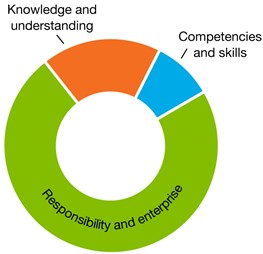Explore content
Typically, by the end of Year 4, students:
Understand computer mediated communications
understand that computer mediated communications are directed to an audience for a purpose
Identify the impacts of ICT in society
identify the value and role of ICT use at home and school
Typically, by the end of Year 4, students:
Select and evaluate data and information
explain why located data or information was selected
Typically, by the end of Year 4, students:
Recognise intellectual property
acknowledge when they use digital products created by someone else, and start to indicate the source
Apply digital information security practices
independently apply standard guidelines and techniques for particular digital systems to secure digital information
Apply personal security protocols
apply standard guidelines and take action to avoid the common dangers to personal security when using ICT and apply appropriate basic social protocols when using ICT to communicate with unknown audiences
Define and plan information searches
Use ICT to plan an information search or generation of information, recognising some pattern within the information
Locate, generate and access data and information
locate, retrieve or generate information from a range of digital sources
Generate ideas, plans and processes
use ICT to generate ideas and plan solutions
Generate solutions to challenges and learning area tasks
create and modify simple digital solutions, creative outputs or data representation/ transformation for particular purposes
Collaborate, share and exchange
use appropriate ICT tools safely to share and exchange information with appropriate known audiences


